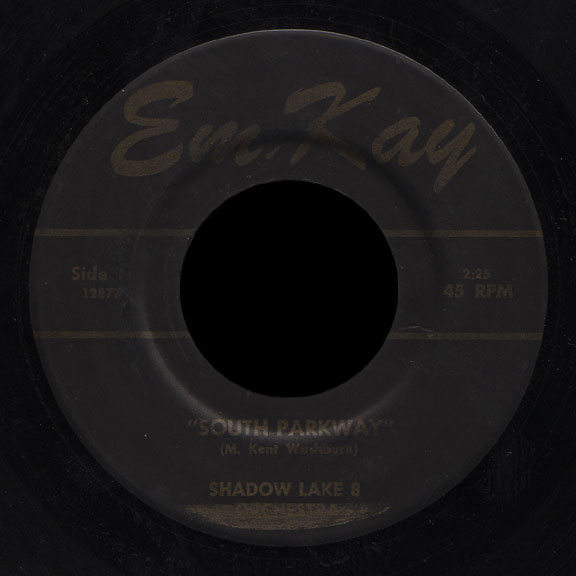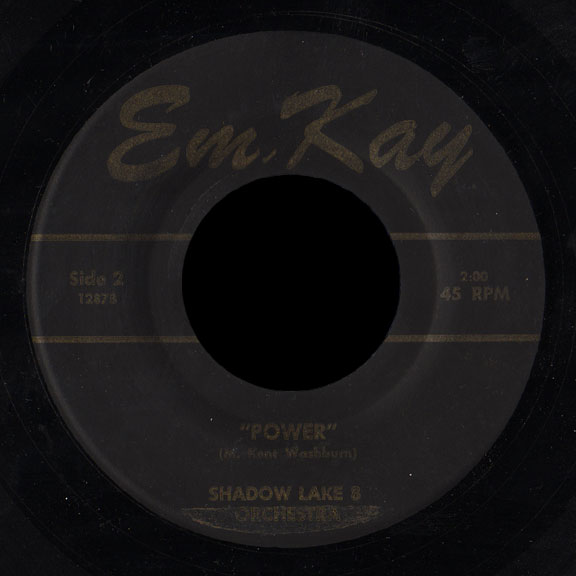

The little known folk-rock group The Lamp of Childhood was the brainchild of singer/songwriter and guitarist James Hendricks (b. 10 February 1940, Atkinson, Nebraska), who organised the original band around June 1966 after working with The Big Three and The Mugwumps. Beside Hendricks, the group also boasted Portland, Oregon, born lead guitarist Fred Olson and singer/songwriter and Hawaiian born rhythm guitarist Mike Tani (aka Michael Takamastu), who were both relative newcomers to the scene. Indeed, it was the group’s drummer, Billy Mundi (b. 25 September 1942, San Francisco), who was by far the most seasoned member, having studied music at UCLA during the late 1950s and performed with a number of noteworthy groups prior to completing the band during the summer. His musical credentials included spells with future Byrd Skip Battin’s group and as a member of another intriguing folk-rock ensemble, Mastin & Brewer.
It was Hendricks’ connections, however, which led to a deal with Dunhill Records and the release of a handful of singles over the next year. Hendricks’ wife was none other that Cass Elliot of The Mamas & The Papas, who were also represented by Dunhill, and the fact that she and singer Denny Doherty had recorded with Hendricks in The Mugwumps probably helped to clinch the deal.
To assist the band with its recordings, Dunhill linked The Lamp of Childhood up with English expatriate Andy Wickham and Israeli immigrant and classical pianist Gabriel Mekler, who oversaw the sessions for the group’s three singles and numerous unreleased recordings. “The story goes that when [Mekler] arrived in Los Angeles he finds his way to Dunhill Records and tells them he can produce a hit record,” says Jim “Harpo” Valley, who got to know the group while he was playing with Paul Revere and The Raiders. “He had never produced before and wasn’t that familiar with rock ‘n’ roll or pop music. They give him the opportunity with a new group called The Lamp of Childhood.”
Mekler’s relationship with the group was somewhat similar to that of Brian Wilson in The Beach Boys, joining The Lamp of Childhood in the studio but not participating in live work. Mekler’s piano playing was employed for several tracks and towards the end of the group’s life he also assisted with the song writing.
Little is known about the sessions that produced the band’s three obscure singles, but what can be gleaned is that Mundi stayed around long enough to appear on The Lamp of Childhood’s debut release, a low-key reading of Donovan’s “Season of The Witch” backed by Tani, Hendricks and Olson’s “You Can’t Blame Me”. It was an impressive start but the single’s failure to register on the charts that September probably played a part in Mundi’s decision to defect the following month to join Frank Zappa’s Mothers of Invention (and later Rhinoceros and numerous sessions).
The group carried on, working largely in the studio, and only picking up a drummer for the odd live performance. As Jim Valley suggests, the trio of Hendricks, Olson and Tani were often assisted in the studio by The Mamas and The Papas session crew, drummer Hal Blaine, pianist Larry Knechtel and bass player Joe Osborn. That at least is his recollections of one session, which he was asked to participate in playing acoustic guitar, alongside a string section.
“At one point during my year with The Raiders, I moved into an old mansion that used to belong to Greta Garbo. In the downstairs apartment lived Fred Olson [and] we became pals,” explains Valley, who was approached to join the band soon afterwards. “Gabriel and James asked me to record on one of the sessions. My time with The Raiders was becoming strained, my tunes weren’t being recorded and the group just wasn’t evolving as I felt they would or could.
“My song writing was changing due in part to my association with musicians like Gabriel and Jackson Browne and Pamela Polland, who was with a group called The Gentle Soul,” continues Valley. “So one night, Gabriel and James came over to the house very excited. They had decided that I should leave The Raiders and join The Lamp of Childhood. It felt like the right thing at the right time.”
As it was not everyone was happy about the decision to approach The Raiders’ lead guitarist. “The rest of the group wasn’t in on the decision and as it turned out Andy Wickham, the publicist from Dunhill didn’t agree with the move. He felt that Harpo from The Raiders was not the right move. So it never happened but it did show me I was ready to leave The Raiders,” says Valley.
Despite his fleeting relationship with the band, the guitarist has fond memories of the Lamp’s songs. “‘Misty Morning Eyes’ and ‘I Look For Your Smile In A Thousand Faces’ were the first recordings I heard from the group. Since 1967, I’ve never heard those songs again. I’d love to hear [them] again. Their voices were like angels and I was knocked out with their arrangements.”
Of the two songs listed, “Thousand Faces”, to give it its correct title, is a co-write between Mike Tani, James Hendricks and Gabriel Mekler. The author of the other title, however, is not known unless of course this is just a working title. The BMI, which represents, songwriters, composers and publishers, lists a number of songs written by the band’s members during this period but whether these were meant for The Lamp of Childhood and were recorded in the studio remains a mystery (and Hendricks cannot remember any titles).
To start with Mike Tani and James Hendricks co-wrote one song called “Low Down Woman” and also collaborated on another entitled “Blues for Django” with guitarist Eric Hord. The BMI lists a number of Mike Tani compositions with interesting titles like “Maybe Again”, “Prayer for Julian” and “Sad Sad Memories” but whether these songs were solo tracks, group recordings or meant for other artists is not clear.
As it was, none of the above tracks turned up on the group’s second Dunhill single, released in March 1967. Gabriel Mekler penned the A-side – “First Time, Last Time” backed by Tani, Hendricks and Olson’s “Two O’Clock In The Morning”. Once again, however, the single failed to make the charts despite both being strong numbers and coming in an attractive picture sleeve. The single, incidentally, featured new member, bass player Marty Tryon from The Purple Gang who added a fourth voice to the mix.
Back in the studio, The Lamp of Childhood recorded one final track, and arguably their finest moment on disc, “No More Running Around”, a co-write by Mekler, Hendricks and Tani, which features some fantastic piano flourishes courtesy of Mekler. Coupled with a re-release of “Two O’Clock In The Morning” on the A-side, the single was issued later that summer by which point the band had undergone a major upheaval, resulting in James Hendricks’ departure for a solo career. Like the other singles, “No More Running Around” fell on deaf ears.
 In his place, Tani, Olson and Tryon recruited guitarist and singer John York (b. 3 August 1946, White Plains, New York), who had previously worked with The Bees, The Sir Douglas Quintet and The Gene Clark Group and would subsequently tour with The Mamas & The Papas and record with Johnny Rivers before joining The Byrds in late 1968 for two albums. “I joined The Lamp of Childhood after James Hendricks left,” explains York. “His girlfriend [sic] Cass Elliot wanted the band destroyed because she was mad at James and possibly because it might have been a threat to The Mamas & The Papas.”
In his place, Tani, Olson and Tryon recruited guitarist and singer John York (b. 3 August 1946, White Plains, New York), who had previously worked with The Bees, The Sir Douglas Quintet and The Gene Clark Group and would subsequently tour with The Mamas & The Papas and record with Johnny Rivers before joining The Byrds in late 1968 for two albums. “I joined The Lamp of Childhood after James Hendricks left,” explains York. “His girlfriend [sic] Cass Elliot wanted the band destroyed because she was mad at James and possibly because it might have been a threat to The Mamas & The Papas.”
The new line up did only one gig with a borrowed drummer at the Mount Tamalpais Festival in San Francisco in mid-June 1967. “I do remember vividly our gig at the 1967 Mount Tamalpais Music Festival,” recalled Tryon in an interview in Misty Lane issue 19. “We had to follow The Doors our first afternoon. The last song of their set was ‘Light My Fire’. We played as the people walked out. Our second afternoon, we followed The Fifth Dimension. Their last song was ‘Up Up and Away’ as skydivers with purple trails parachuted into the venue. We played as the people walked out. Talk about feeling invisible. We knew that feeling.”
According to John York, the plan was that the group would erase James Hendricks’ vocal parts on the unreleased songs and he would sing them. Apparently that was not enough for Cass and “Dunhill ‘froze’ the band for seven years.” James Hendricks, however, denies that there was any friction with Elliot and the group.
Whatever the case, the individual members went their separate ways, although Mike Tani and John York did reunite years later to work as a duo act for several years. Marty Tryon meanwhile hooked up with the remnants of John York’s former band, The Bees, now going by the name The WC Fields Electric String Band. After missing out on a chance to join Steppenwolf, he later did sessions for Simon Stokes. He currently works with the Smothers Brothers.
Olson, who moved into session work, appearing on Brewer & Shipley’s Weeds and Mike Bloomfield’s It’s Not Killing Me albums in 1969 and Southern Comfort’s eponymous debut in 1971, sadly died years later from a heroin overdose. Gabriel Mekler sadly is also no longer with us. After the band’s premature demise, he landed on his feet and found the success that he had missed with The Lamp of Childhood in his next project, the multi-million selling Steppenwolf.
As for James Hendricks – he attracted the patronage of singer Johnny Rivers, who expressed an interest in covering the singer/songwriter’s “Summer Rain”. Released as a single, it became a top 20 US smash in January 1968, and Rivers also recorded a number of Hendricks’ compositions for his new album, Rewind. Hendricks later recorded a solo album, produced by Johnny Rivers, with whom he maintained a close working relationship and he continues to record to this day.
In the months that followed The Lamp of Childhood’s demise, one final piece of work emerged on The Nitty Gritty Dirt Band’s album, Pure Dirt – the previously unreleased Tani, Hendricks and Olson collaboration, “You’re Gonna Get It In The End”. And apart from the inclusion of “No More Running Around” on the Dunhill Records’ sampler, The Penny Arcade, that’s all that’s been heard from a group that promised so much but never achieved its full potential.
Many thanks to James Hendricks, Jim Valley, Brian Hogg, Mike Paxman, John York, Marty Tryon.
Copyright © Nick Warburton. All Rights Reserved. No part of this article may be reproduced or transmitted in any from or by any means, without prior permission from the author.
To contact the author, email: Warchive@aol.com











 The Chevrons V came from Grand Rapids, Michigan.
The Chevrons V came from Grand Rapids, Michigan.


































 One of the most common band names of the ’60s was the Rogues. This particular group attended prep school at Mercersburg Academy, located southwest of Harrisburg, close to the Maryland state line.
One of the most common band names of the ’60s was the Rogues. This particular group attended prep school at Mercersburg Academy, located southwest of Harrisburg, close to the Maryland state line.